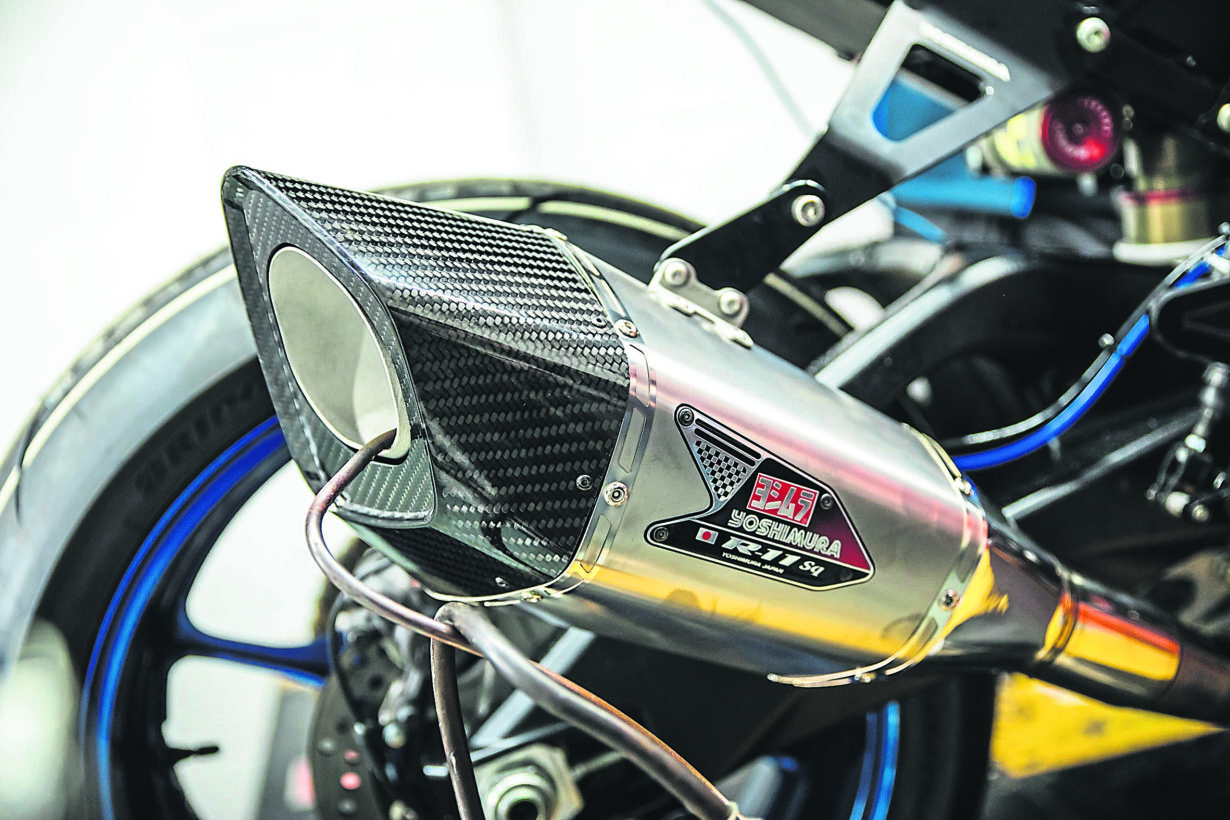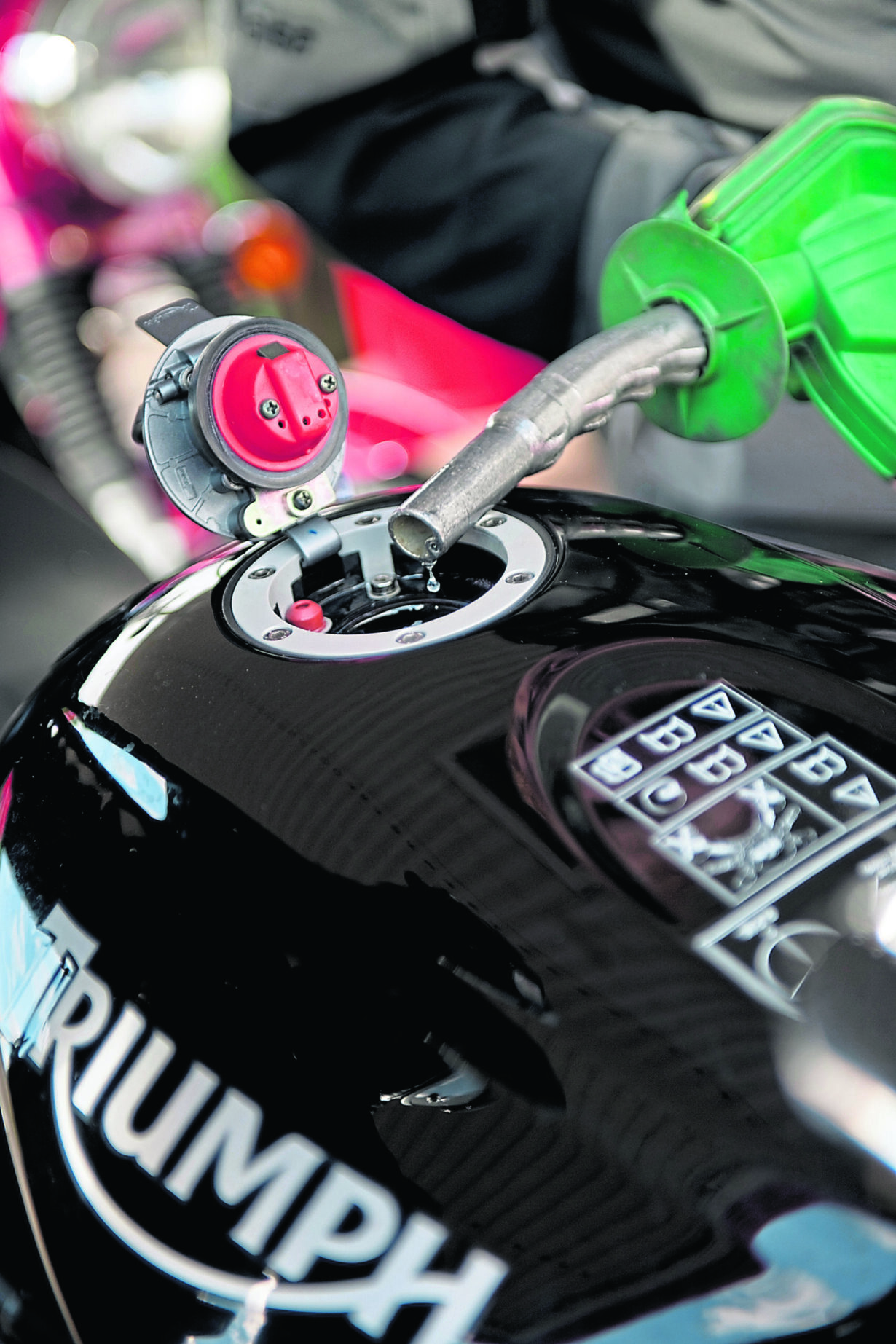Alan Dowds explains…
Picture the scene. It’s 2045, and you’re out for a ‘Sunday blast’ on your Royal Enfield Chennai 850 MotoGP replica (Enfield has won the last 10 MotoGP and WSBK titles in a row, but that’s another story…). The AI agent which runs the bike sends a message to the comms chip just under the skin behind your ear, and your brain registers that you need some fuel. Stupid small fuel tank!
You pull into the Octopus Energy outlet, and trundle past a line of 20 BYD electric cars (plus an ancient Tesla, from the time when they still made those things), all plugged in for a three-minute battery charge from the solar-powered 10-megawatt outlets.
Enjoy everything More Bikes by reading the MoreBikes monthly newspaper. Click here to subscribe, or Read FREE Online.
You don’t need that kind of juice though: you’re headed past the electric sheep, towards a pair of old-school fuel pumps. Okay, they’re fully robotic, and you pay with that chip behind your ear, rather than handing a crisp £20 to a sullen cashier – but they’re still dispensing ‘petrol’. Or biofuel as they call it: a mix of clever hydrocarbons, made by genetically-engineered microbes, feeding on corn grown in vast stretches of the irrigated Sahara and potatoes from the greenhouses of Free Siberia.

Your Chennai 850 V4 runs on nothing else, and while cars are all battery-powered nowadays, a special dispensation means bikes get to stick with a carbon-neutral liquid fuel, along with long-range jet planes (the battery tech still can’t last more than halfway across the Atlantic on an A380e…), and the limited number of classic cars still on the road. Tank full, you race off to the coast for an ice cream and a selfie on the prom. Some things never change…
Okay – that’s all science fiction at the moment. But there’s a strong argument that says carbon-neutral liquid fuels have a pretty bright future in niche areas, like motorcycling. Producing an energy-dense hydrocarbon liquid from plants is something humans have been doing for thousands of years, of course: fermenting and distilling alcohol or ethanol from almost any plant material. Whisky from barley, brandy from grapes, vodka from potatoes – the carbon atoms in the alcohol molecules come from carbon dioxide in the atmosphere, meaning you can burn it in an engine without adding to the greenhouse effect almost every scientist agrees is warming the planet drastically.
We’re doing it right now, too: there’s up to 10 per cent ethanol, from biofuel factories, in all the petrol sold in the UK, with more on the way. Some countries, like Brazil, have been using ethanol, made from sugar cane, for decades, with most vehicles designed as ‘flex-fuel’, meaning they can use just about anything, from 100 per cent petrol to 100 per cent ethanol. The American agricultural industry has geared up massively for government-backed ethanol production over the past few decades, and is now the biggest producer, supplying up to 85 per cent ethanol (E85) for flex fuel cars in the US, and E10 as the basic fuel for all vehicles.
We looked at the problems of battery power for bikes a few months back. The basic issue is a triangle of cost-size-mass, which means it’s impossible to have powerful 100bhp+ bikes and reasonable range with the same price, size and weight of a petrol machine. However, as a quick look round any car park today shows, batteries work well with cars: hiding a £15k 200kg battery pack the size of two large suitcases is fairly easy on a modern £50k family car. Charging tech and range is also improving all the time.

What this means is that there’s going to be a decline in the demand for liquid fuels – petrol, and the ethanol that’s added to it – as cars increasingly move to battery power. And in turn, that will mean more biofuels becoming available for bikes, as a nice little niche market for the producers. Added to the classic car market, which will no doubt continue, you can see how a small specialist network of biofuel suppliers could keep biking going, largely as it is today, while cutting CO2 emissions hugely.
And there’s scope for that biofuel to be as good as – or better than – the petrol we pump today. Ethanol is a decent internal combustion engine fuel: it’s resistant to knock, is easy to handle, and not particularly toxic or explosive. But it’s lower in energy density than petrol, meaning you need more of it for a given power output.
There is a better option though – butanol is an alcohol, like ethanol, but with four carbon atoms in each molecule instead of two. That means it stores more chemical energy and is closer to petrol in terms of performance. Also, Butanol doesn’t absorb water like ethanol, reducing the storage problems and corrosion in engine parts caused by ethanol use.
Butanol is harder to make than simple ethanol, but recent advances in genetic engineering of micro-organisms mean special fermentation processes can produce it in a similar way. Firms like BP and Dupont have set up pilot schemes to research butanol production from biomass, with the aim of a ‘drop-in’ petrol replacement fuel mix. Just the job for that 2045 MotoGP race replica…


